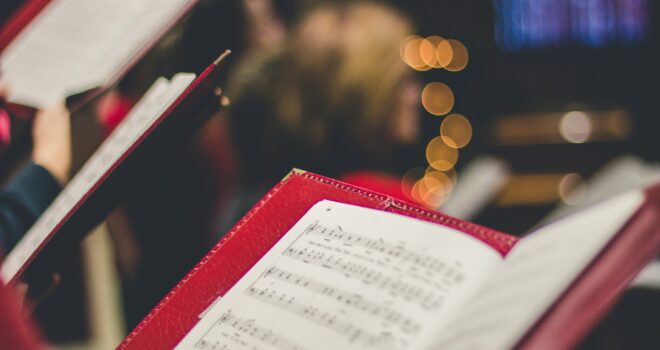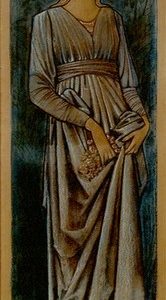Celebrating the Holy Mass is like witnessing the kiss of heaven and earth. Our Lord Jesus Christ comes down to meet us on earth. For one hour, we are transported out of time and space, and brought to the foot of the Cross on Calvary, where He is re-presented as the One Perfect Sacrifice for all. He physically enters the room to dwell with us.
There is one particular hymn that is sung (or said) to commemorate Our Lord walking into the room: The Sanctus (“Holy, Holy, Holy, Lord God of hosts”).
Prior to His Passion and Death, Jesus enters the City of Jerusalem, riding on a colt. The people greet Him by waving palm branches, laying their cloaks on the ground before Him, singing, “Hosanna to the Son of David! Blessed is he who comes in the name of the Lord! Hosanna in the highest!” (Mt. 21:9) Even today, we remember this occasion on Palm Sunday.
We also commemorate the entrance of Our Lord into Jerusalem at every Mass, as He enters the New Jerusalem. We sing, “Blessed is he who comes in the name of the Lord. Hosanna in the highest.” Just as the people in Jerusalem sang this hymn and prostrated themselves before the Lord, so now we also sing the same hymn, and immediately kneel in anticipation for His coming in the Holy Eucharist. The Church stipulates that it is important for the assembly to kneel, as Our Lord is literally entering into room under the appearance of bread and wine. Our posture thus commemorates this physical Presence. The General Instruction of the Roman Missal states,
“In the dioceses of the United States of America, [the faithful] should kneel beginning after the singing or recitation of the Sanctus until after the Amen of the Eucharistic Prayer.” (GIRM 43)
In this charism, we indeed honor the name of Our Lord: “At the name of Jesus, every knee shall bend!” (Philippians 2:10-11) In this glorious moment of the Sanctus, the Church Militant on earth unites with the Church Triumphant in heaven, as we sing with the angels, “Holy, Holy, Holy Lord God of hosts. Heaven and earth are full of your glory.” (Is. 6:3)
The Sanctus is one of the most ancient hymns, as Catholics have been singing it since the year 60-90 AD. Saints have spoken of this hymn throughout the very beginnings of the Church: St. Clement of Rome (d.104), St. Athanasius (d. 373), St. Cyril (d. 373), St. John Chrysostom (d. 407), Tertullian (d. about 220), and many others have alluded to the splendor of the Sanctus. In fact, Charlemagne gave a decree that the Sanctus should be sung by both clerics and faithful in his Admonitio generalis, written in 789.
“Hosanna” is a Hebrew word that means, “God saves.” Indeed, may God save us, and may we bless Him as we forever proclaim:
“Holy, Holy, Holy Lord God of hosts. Heaven and earth are full of your glory. Hosanna in the highest. Blessed is he who comes in the name of the Lord. Hosanna in the highest.”
Photo by David Beale on Unsplash










